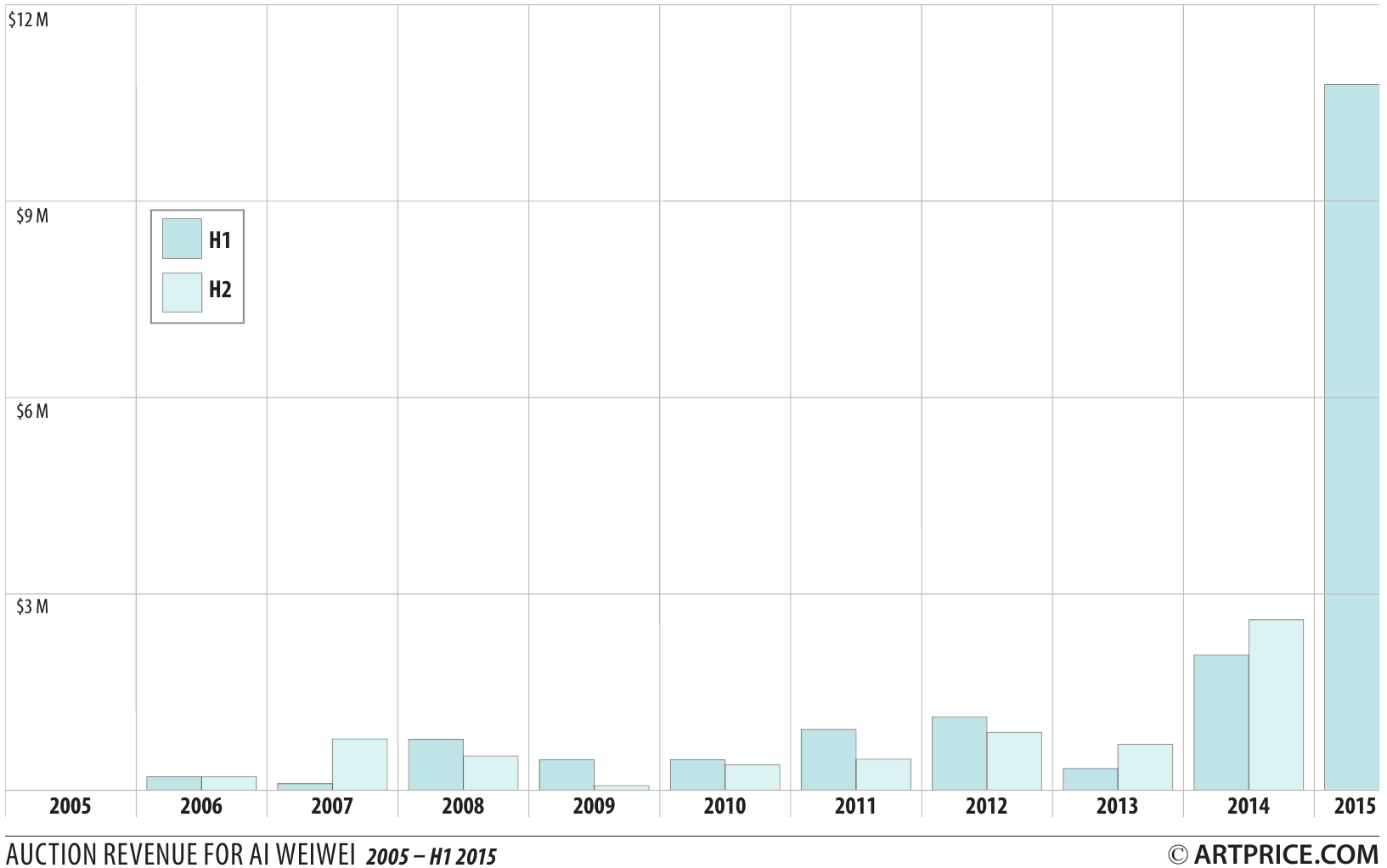AI Weiwei – the double agent
Invited to the Documenta 12 exhibition in Kassel in 2007, AI Weiwei managed to bring over 1,001 Chinese citizens of all ages and social backgrounds. The following year, when Beijing’s Olympic Stadium was inaugurated, becoming the city’s new emblem, he firmly expressed his regret at ha-ving participated in the project’s design… In 2010, he occupied the Tate Modern’s Turbine Hall with Sunflower Seeds, an installation containing millions of ceramic sunflower seeds hand-crafted and hand-painted by Chinese craftsmen that scrunched and squeaked beneath the visitors’ feet. Recognised and supported by the art world’s most eminent personalities, AI Weiwei’s notoriety owes more to his forceful and robust actions than to art market consecration, although recently he seems to be gaining ground in that area too…
AI Weiwei believes that the most exciting way to make art is to criticise concrete problems. Profoundly militant and anti-establishment, AI Weiwei is simultaneously a political activist and a veritable pioneer on the artistic scene. Aged 21, he was a member of Les Étoiles, a group of avant-garde artists opposed to Chinese Socialist Realism and advocating artistic individualisation and experimentation. In 1981 he moved to New York, attended the Parsons School of Design, was inspired by Marcel Duchamp’s ready-mades, and decided to totally integrate art into his life… and vice versa. In 1993 he returned to Beijing to be with his ailing father and his profound antagonism towards the Chine-se authorities became even more acute, prompting him to make increasingly subversive artworks. In 1995, he created his famous Study of perspective (1995-2003) series of photographs showing him raising the finger to a selection of global symbols of power, including the Eiffel Tower, Sydney Opera House, the White House, da Vinci’s Mona Lisa and Tian’anmen Square. The series had such a strong psychological impact that the first print to arrive at auction doubled its estimate, fetching close to $14,0001 in 2006. However, these works are too rare on the market: the last to appear – a finger to the Mona Lisa – was offered in 2008 in Beijing. His work being less well received in China than elsewhere, the photo sold somewhat discreetly for $9,000, within its estimated range2.
AI Weiwei never stops protesting, irreverently using all the media at his disposal, from photos, to installations, to performances, social networks and via his blog, one of China’s most visited sites. Irritated by the audience for his works and his acts of protest, the Chinese government placed him under surveillance and then arrested him on 3 April 2011. His studios and home were searched and his computers were confiscated. A few weeks later, on 17 April, there was a large demonstration of support for him in Hong Kong. On the following 7 May, he was appointed a member of the Berlin Academy of Arts. On 22 June, he was released on bail after 81 days in jail, watched round the clock. In December, Time Magazine voted him “Man of the Year 2011”.
In recent months two large exhibitions have been organised without the artist:Evidence at Berlin’s Martin Gropius Museum and a retrospective at Barcelona’s Virreina Art Center3. The Chinese government having confiscated his passport, AI Weiwei was unable to attend. In Barcelona, his work tables were exhibited to underscore his absence (On the Table). Recently, the Chinese government has somewhat relaxed its grip on the artist and he has recovered his freedom of movement. After his prohibition from exhibiting in China, the regime’s bête noire was authorised to inaugurate his exhibition last May in Beijing’s famous 798 Art District.
Outside of China’s mainstream art world, he is almost absent from the local auction market: in ten years only 18 works have been auctioned there4. On the other hand, his installations are much in demand in London (accounting for 54% of his annual turnover) and New York. The year 2015 has seen two new records, generated by the same work, Circle of Animals/Zodiac Heads, which fetched more than $4.3 million in February, then $5.4 million in June5. This powerful installation draws on the memory of historical discord and difficult relations between China and Europe. Representing the 12 signs of the Chinese zodiac the work is inspired by the zodiacal fountain clock designed in the 18th century for the Beijing Summer Palace. The Palace was overrun by British and French troops in 1860 during the Second Opium War and some of the bronze animal heads were looted6. To create his work, the artist used the seven remaining originals as references and imagined the five missing heads. The installation was unveiled in New York in May 2011 and was subsequently exhibited across the United States, Europe and Asia.

Iconoclast and rebellious, AI Weiwei’s independence keeps him in constant contact with the world, and the art world apparently appreciated that. His first results above the million-dollar line this year represents a veritable turning point in his artistic career.
-
Tiananmen Fuck Off, Gelatin silver bromide, (artist’s proof ), Artcurial Paris, 29 June 2006.
-
Untitled, colour photograph, 1999, (artist’s proof ), Beijing Council International Auctions, Beijing, 7 December 2008.
-
Evidence at the Martin Gropius Museum in Berlin (April-July 2014) and the retrospective at the Virreina Art Center of Barcelona (November 2014 – February 2015).
- Approximately 160 of his works have sold at auction worldwide since 2006.
-
Circle of Animals/Zodiac Heads: a gold-plated version fetched more than $4.3 million (ed. 7/8) on 12 February and then another gold version fetched $5.4 million (ed.1/6) on 29 June at Phillips in London.
- The rat and rabbit heads later appeared in Pierre Bergé’s collection, then François Pinault’s collection, before being returned to China in 2013.






 41.9
41.9
